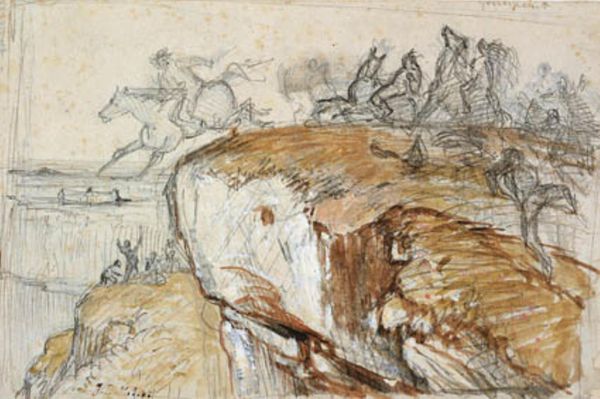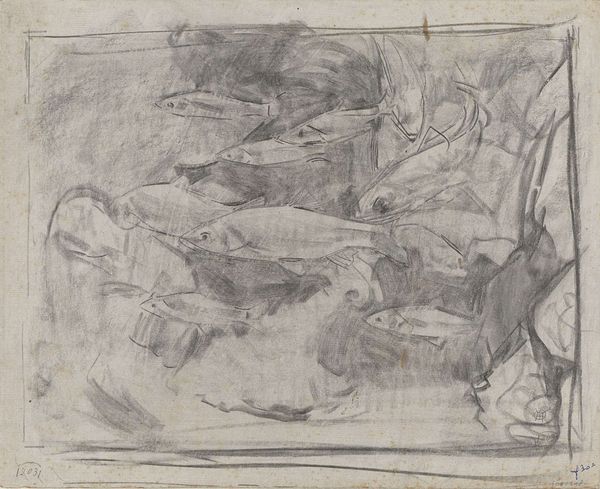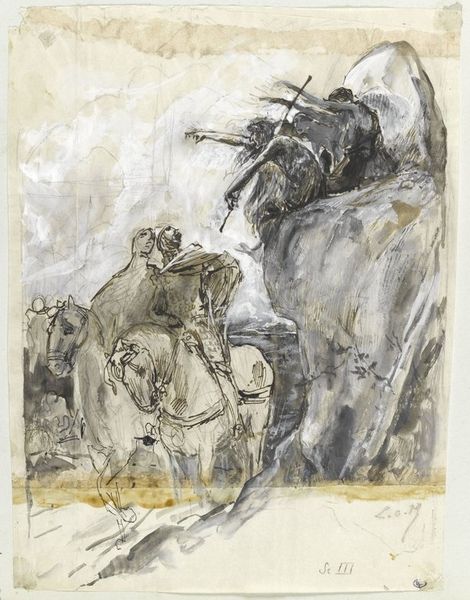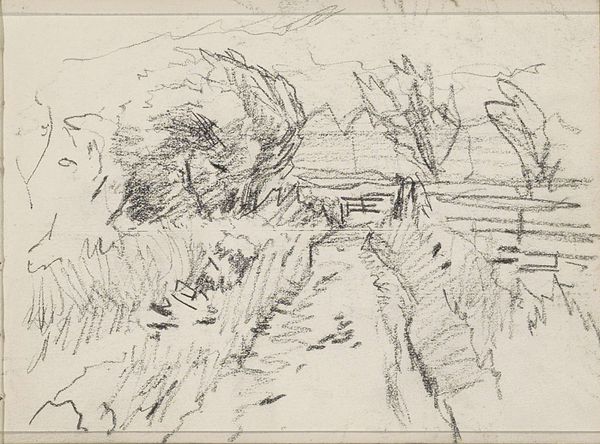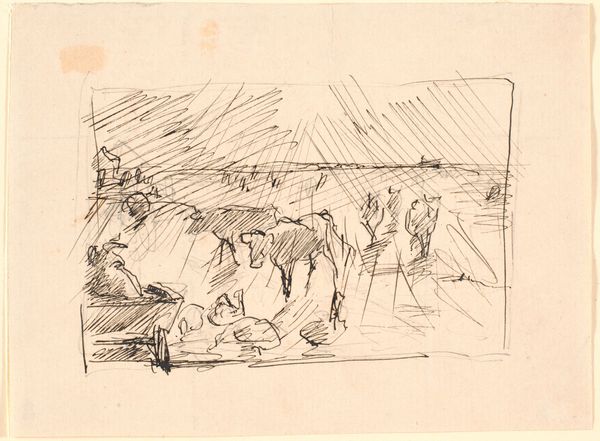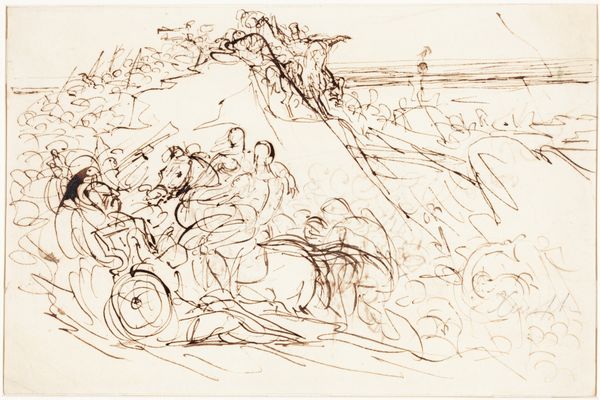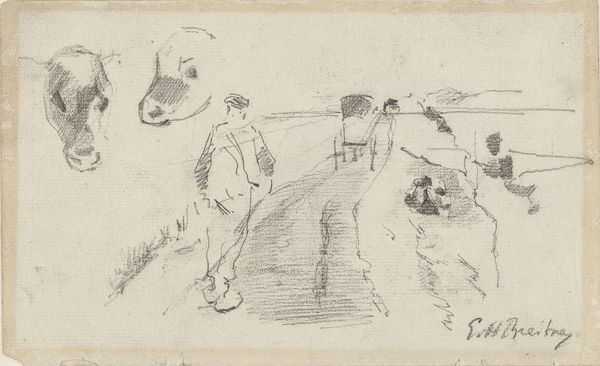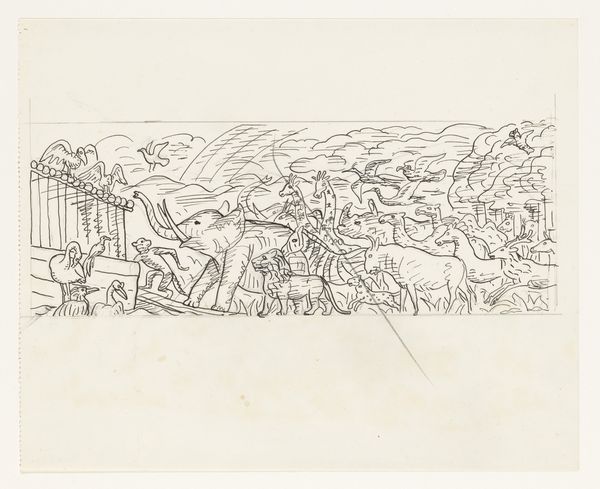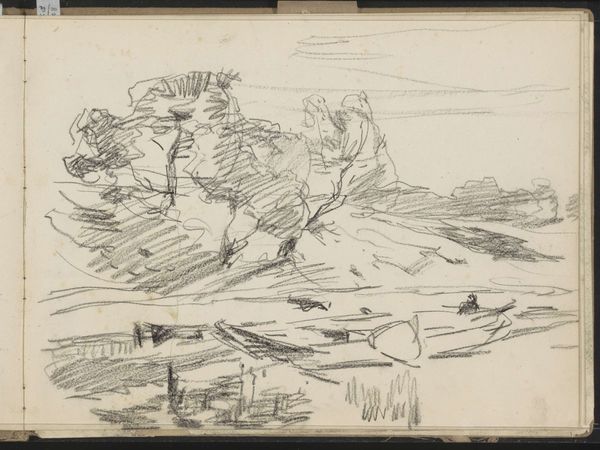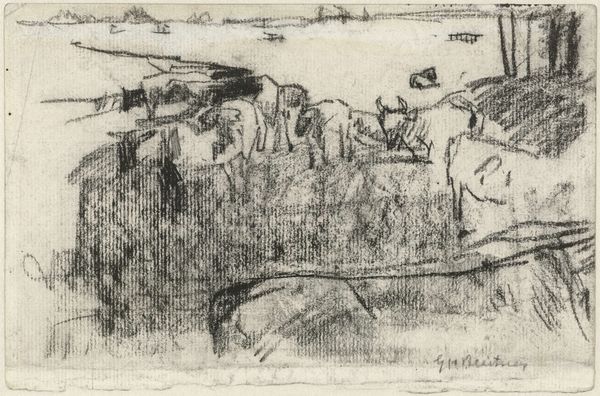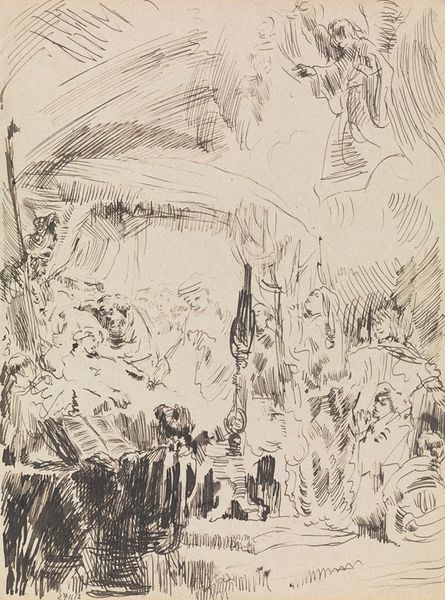
Copyright: Public Domain: Artvee
Curator: This watercolor and ink drawing from 1869 is Jozef Israëls' "Stone Quarry near Pontresina." What’s your first impression? Editor: Well, it's…gritty. A muted palette, lots of strenuous figures, all angled against what looks like unforgiving terrain. It feels honest in a way that's almost uncomfortable. Like, I'm not supposed to be looking. Curator: Israëls really was captivated by the realities of working-class life. It’s interesting how he uses watercolor—normally associated with light and airy landscapes—to depict something so laborious. He's elevating their work, dignifying the act of extracting material from the earth, right? Editor: Absolutely, and it’s no accident. These weren’t pretty pastels daubed on for fun, right? Pigments back then came directly from minerals, plants, sometimes even insects, demanding extraction and processing of their own. So even the act of creation mirrors the miners' own. Plus, the composition directs our eyes down, down into the pit with them, and the subtle use of ink almost stains the paper, just like their labor probably stained their skin. Curator: Yes, that stain...it speaks to the permanence of their labor, their integration into the landscape, even if only through toil. I feel empathy here, a connection. Israëls almost asks us, the viewer, to participate, emotionally if not physically. It’s more than a pretty picture, isn't it? Editor: Indeed, there's nothing 'pretty' about repetitive, back-breaking work! Consider the social context: as romantic landscape painting waned, there was a turn to gritty realism in depicting contemporary life, particularly industry and the working class. Here Israels isn’t only documenting the sublime of nature, but more specifically, the making, and unmaking, of nature in the rise of industrial capitalism. And for me, that’s where its power resides. Curator: A powerful observation. Ultimately, Israëls gives a face and humanity to the raw materials beneath our feet and asks us to consider those hidden histories and connections, in that stain that binds all, viewer, artwork, artist and stone quarrymen. Editor: Absolutely. An unsentimental reminder that the very ground we stand on tells a story, if we’re willing to listen.
Comments
No comments
Be the first to comment and join the conversation on the ultimate creative platform.
